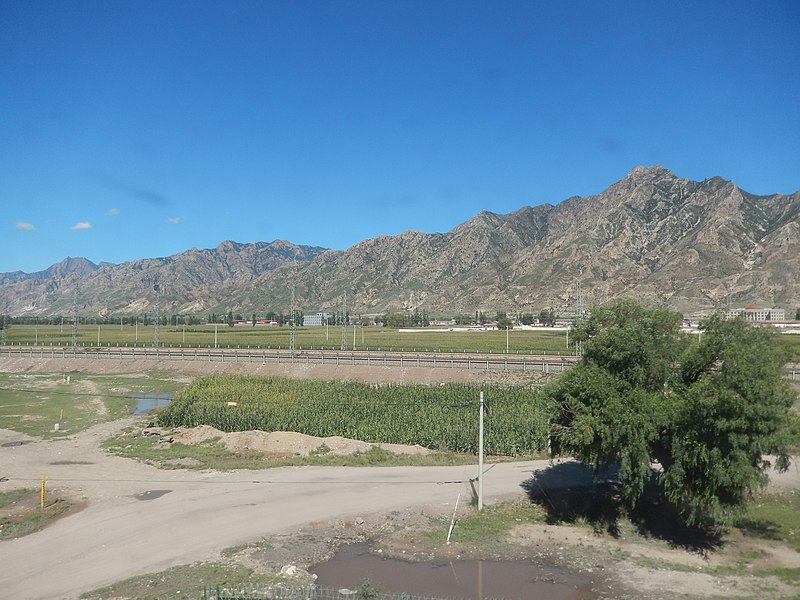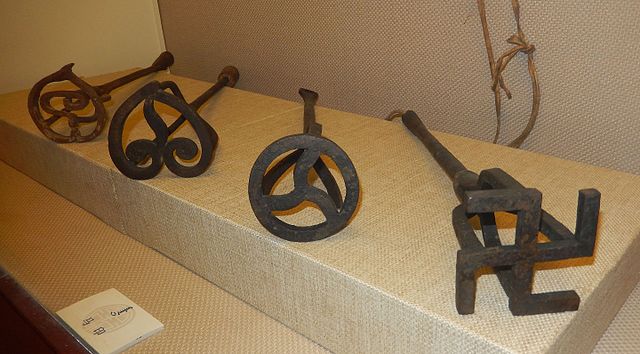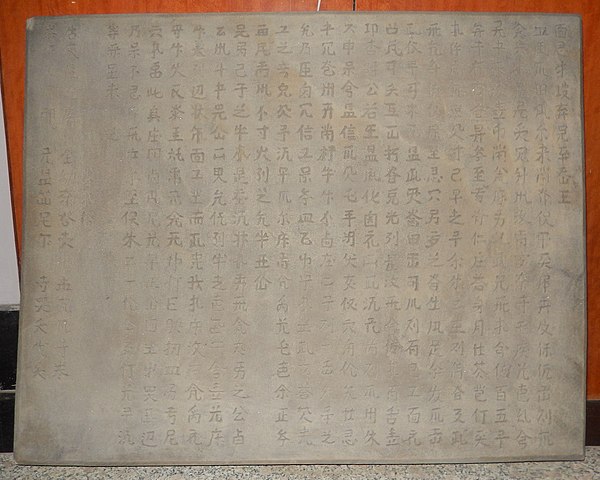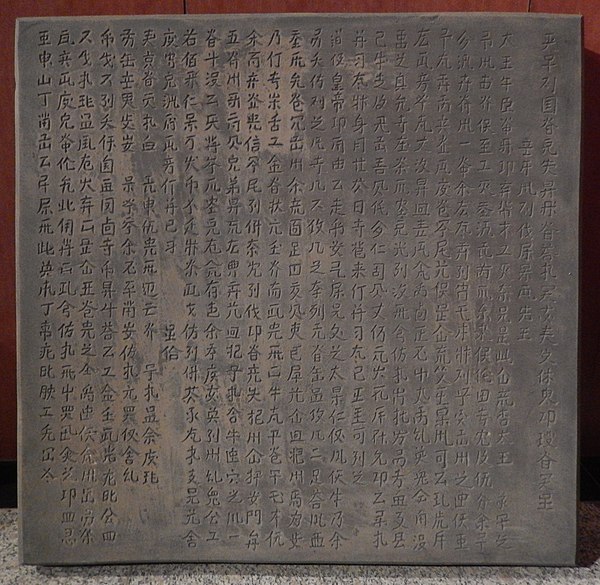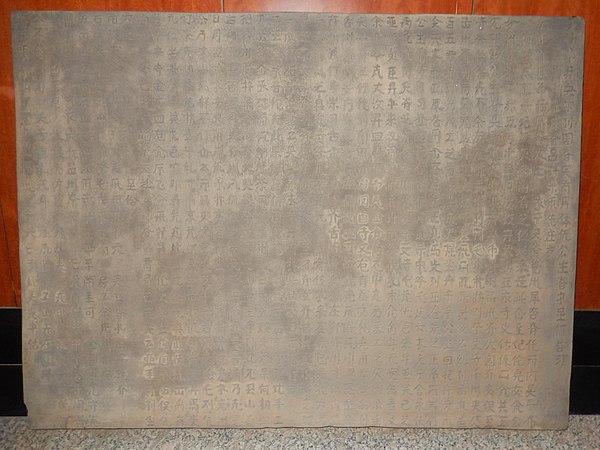Diary of a Rambling Antiquarian
Friday, 26 August 2016
Hohhot Interlude
After spending most of Thursday at the dead city of Kharakhoto, we return to our hotel in Ejina, pick up our bags, and get a taxi to the railway station a few kilometres north of the town. The line running from Baotou, 900 km to the east, through Ejina to Ceke (策克), 80 km north on the border with Mongolia, opened in 2010, and Ejina is the terminus for a daily passenger service to Hohhot. Our train (K7912) leaves at 19:00 precisely, and after an uneventful night in hard sleeper we arrive at Hohhot at 10:54 the next day. This is my first ever visit to the capital of Inner Mongolia.
In the train to Hohhot on Thursday evening

View from the train to Hohhot on Friday morning
We do not have long here. We plan to continue eastwards by train this afternoon, but we have about five hours until we need to be back at the station, so we decide to head into town in search of Khitan monuments. We understand that the Nationalities Museum of Inner Mongolia University (内蒙古大学民族博物馆) holds five stone epitaphs engraved in the Khitan Small Script [KSS], more than any other museum in the worls. I saw one example of a KSS epitaph in 2011 at the Liao and Jin City Wall Museum in Beijing, but I am excited to be able to see some more!
We catch a taxi to the university, the driver being the first Mongolian speaker we have knowingly encountered since entering Inner Mongolia three days ago. We are dropped off outside the south entrance to the university, and after a short walk of ten minutes or so we espy a large gleaming white building which looks like a museum, and on closer inspection definitely is the museum we are looking for.
Nationalities Museum of Inner Mongolia University
It is closed for lunch. Until 14:30. I suggest going somewhere else, and coming back later, but that would give us very little time before we have to head back to the station, so my companion goes boldly up the steps and tries all the doors — one of them opens, and I cautiously follow my fearless friend into the entrance hall. A museum lady, asleep behind a desk, is awakened by clumsy entrance, and I am pushed unwillingly forward to apologize and explain that we have a train to catch so cannot wait until the museum opens in the afternoon, and so please can we have a look around now. Surprisingly, she seems not mind our rude intrusion. She turns on the lights, and leaves us to wander around on our own while she gets back to her mid-day nap.
In front of the Nationalities Museum

We look around the exhibit halls upstairs and downstairs, but to be honest there are not a great many objects of interest or of value on display. Certainly far fewer than the impressive exterior of the building would suggest there should be.
Mongolian branding irons
We search everywhere for the five Khitan epitaphs the museum is supposed to house, but they do not seem to be on display anywhere, and there is no-one around to ask. Finally, in a corner of an area next to the main exhibit hall on the ground floor we come across three inscribed stone slabs on the floor, leaning casually against the wall. It is immediately obvious that the writing on all three is Khitan large script, which is rather unexpected as the museum is supposed to hold five Khitan small script epitaphs and no Khitan large script epitaphs. Something is clearly not right. There are no display labels or signs explaining what they are, and no protection from visitors that would be expected for valuable historical artefacts. Our initial excitement quickly wears off when we realise that they must be either copies or fakes. An examination of the inscriptions confirms our suspicions. The characters are accurate enough, but the calligraphy has a clumsy, childish feel about it, and they are just too perfectly preserved and too legible to be convincing. Later, my companion, Viacheslav Zaytsev, is able to identify them as fakes which copy the text of two published Khitan large script epitaphs.
Fake Khitan Large Script Epitaph (A)
Based on the Epitaph for Yelü Xinie (耶律習湼墓誌銘) of 1114.
Fake Khitan Large Script Epitaph (B)
Mostly based on the Epitaph for the Princess of Yongning Commandery (永寧郡公主墓誌銘) of 1092.
Fake Khitan Large Script Epitaph (C)
An almost complete copy of the Epitaph for the Princess of Yongning Commandery (永寧郡公主墓誌銘) of 1092.
We leave the museum disappointed. When I return to Hohhot in 2017, I will discover that one of the genuine Khitan small script epitaphs is on public display, but not in the museum building, and I will learn more about the whereabouts of the other four. But for now, all we have managed to achieve is to stumble across three fake epitaphs. We feel like we are leaving the museum empty-handed after we had such high expections when we arrived this morning.
We have nearly two hours left, so we go in search of bookstores, in particular bookstores specializing in books in Mongolian. Seeing as we are in the capital of Inner Mongolia you wouldn't have thought that would be too difficult, but the couple of bookstores on the street immediately east of the university had none. We were advised to try a bazaar off the main north-south road, just south-east of the university, and there indeed were several Mongolian bookstores with a wide range of books, including to my delight a large beautifully-illustrated two-volume book on the discoveries of hundreds of fragments of Tangut texts at the Western Xia caves at Shanzuigou in the Helan Mountains. It will be heavy to carry around with me everywhere, but I must have it.
The Western Xia Caves at Shanzuigou

Shānzuǐgōu Xīxià Shíkū 山嘴沟西夏石窟 (Cultural Relics Press, 2007)
Satisfied with our purchases, we catch a taxi back to the main station, just in time to catch the train (K896) to Lindong leaving at 17:18. We have not been able to purchase sleeper tickets for this part of the journey, so it is nearly thirteen hours sitting uncomfortably and sleeping fitfully until we finally arrive at our destination at 06:03. In two days we have travelled 1,500 km west to east across Inner Mongolia.
The station is several kilometres south of the town, and too far to walk, so we catch a taxi to the centre of town, and after trying a few hotels which are either full or too expensive we eventually find one conveniently close to the museums which has a suite of rooms for the three of us at a very reasonable price. But before we go out to explore the historic sights of Lindong we are in need of a shower and some food.
Khitan | Inner Mongolia | Museums
Index of Rambling Antiquarian Blog Posts
Rambling Antiquarian on Google Maps
